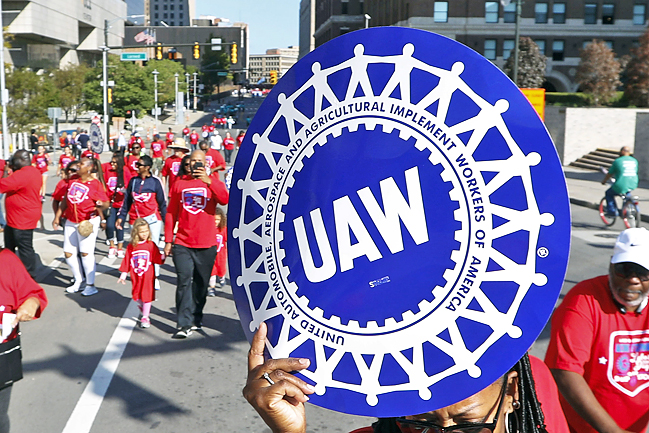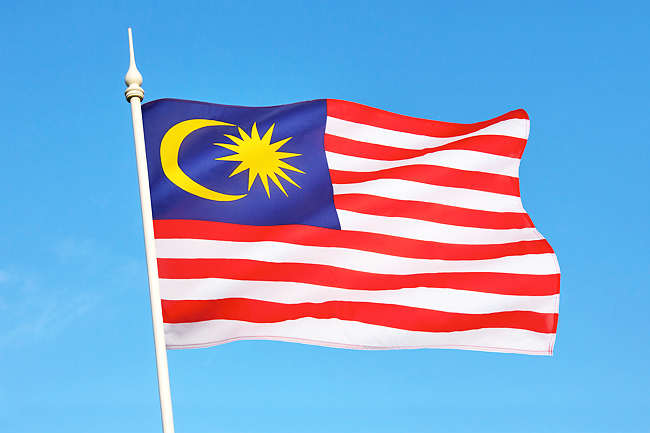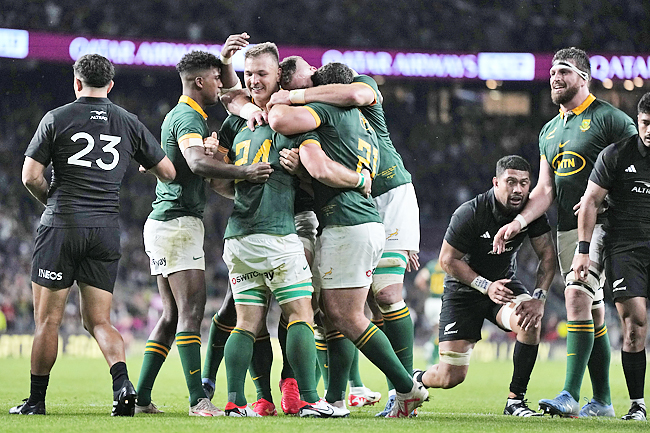LOUISVILLE, KENTUCKY (AP) – Auto workers have voted overwhelmingly to give union leaders the authority to call strikes against Detroit, United States (US) car companies if a contract agreement isn’t reached.
The United Auto Workers (UAW) union said that 97 per cent voted in favour of authorising one or more strikes against Stellantis, General Motors and Ford. Such votes are almost always approved by large margins.
Contracts between the union representing about 146,000 workers at Stellantis, General Motors and Ford expire at 11.59pm on September 14. UAW President Shawn Fain said earlier this week that negotiations with the companies are not progressing fast enough. But he also said a strike is not inevitable.
Contract talks with the Detroit Three began in July, but Fain has consistently said the companies aren’t bargaining seriously.
In a statement on Friday, the UAW said the vote does not guarantee that a strike will be called.
Fain told members on Facebook Live on Friday that the union still hasn’t picked a target company for a strike and could walk out against all three.
“Things could always shift in bargaining if something miraculous happened with one of the companies, it could change,” he said. “We want contracts by September 14 with all three.”
The companies have said they’re bargaining in good faith at a time of unprecedented change in the auto business.

The industry is spending billions to make the transition from internal combustion engines to battery power to cut pollution and fight climate change.
Stellantis, which has drawn much of Fain’s ire in recent weeks, said on Friday that negotiations continue to be constructive and collaborative.
The company said it wants an agreement that will balance employee concerns and position Stellantis to meet the challenges US marketplace and secures the future for all of the employees, their families and their company.
Ford said it’s working with the UAW on creative solutions during this time when our dramatically changing industry needs a skilled and competitive workforce more than ever.
President Joe Biden said on Friday he is concerned about the possibility of a mid-September strike, one that could cripple an industry responsible for about three per cent of the nation’s economy. Speaking to reporters from his vacation in South Lake Tahoe, California, Biden said UAW members should get the first shot at new jobs – appearing to refer to positions at factories that will make battery cells for electric vehicles (EV). Salaries at the new plants should be commensurate with current wages paid to UAW workers, he said.
In the contract talks, the UAW is seeking a 40 per cent pay increase, restoration of pensions for new hires, elimination of wage tiers and other items.
Fain has often told workers they have to be ready to strike in order to achieve gains from the profitable automakers.
The union also wants to represent joint venture EV battery plants being built by the companies, and it’s seeking top union wages at those factories.
Assembly line inspector Jason Hale at Ford’s Kentucky Truck Plant in Louisville, said he voted to authorise a strike. He hopes the union will be able to win general pay raises and restore cost-of-living pay increases and pensions for all workers.









